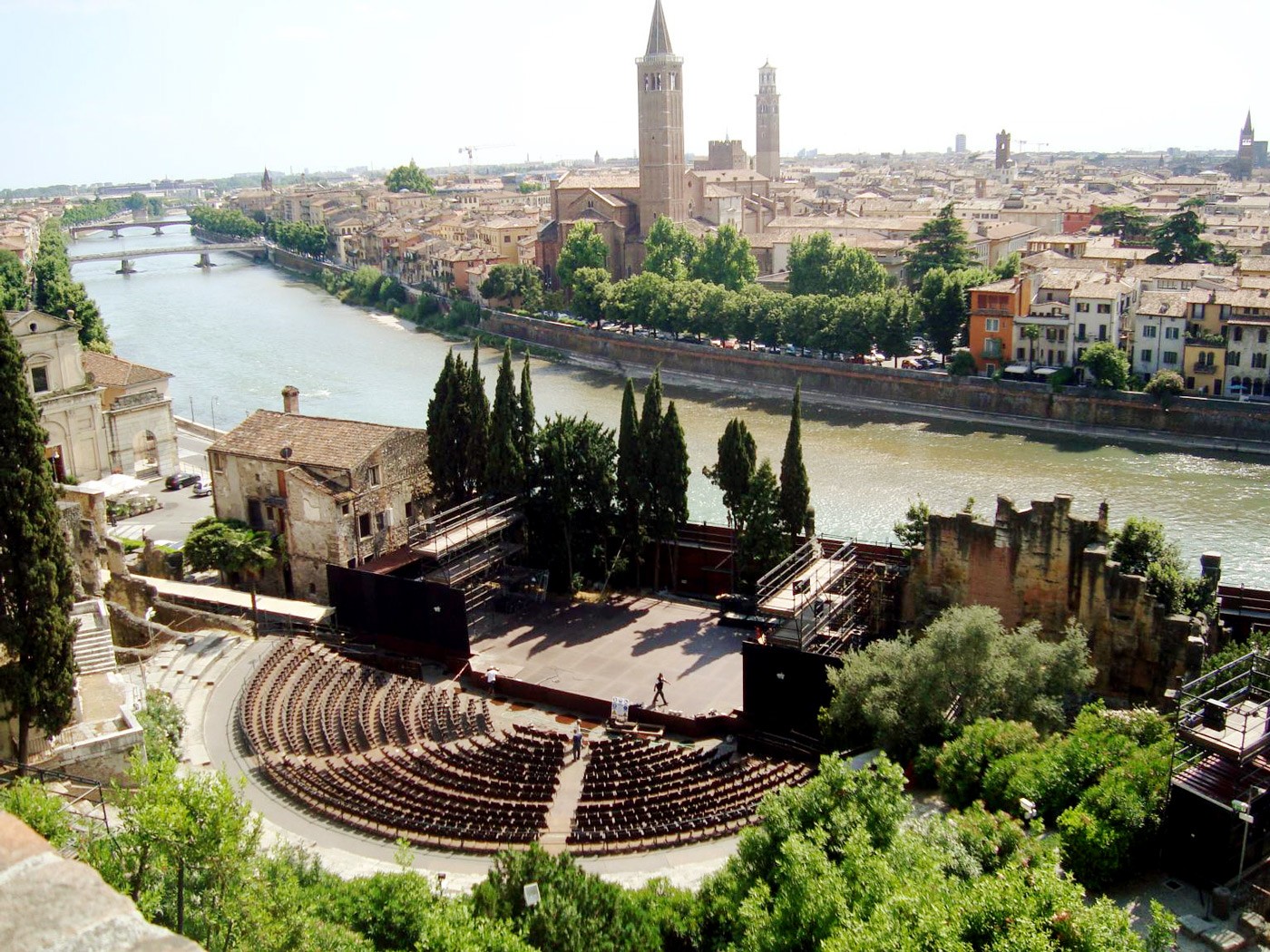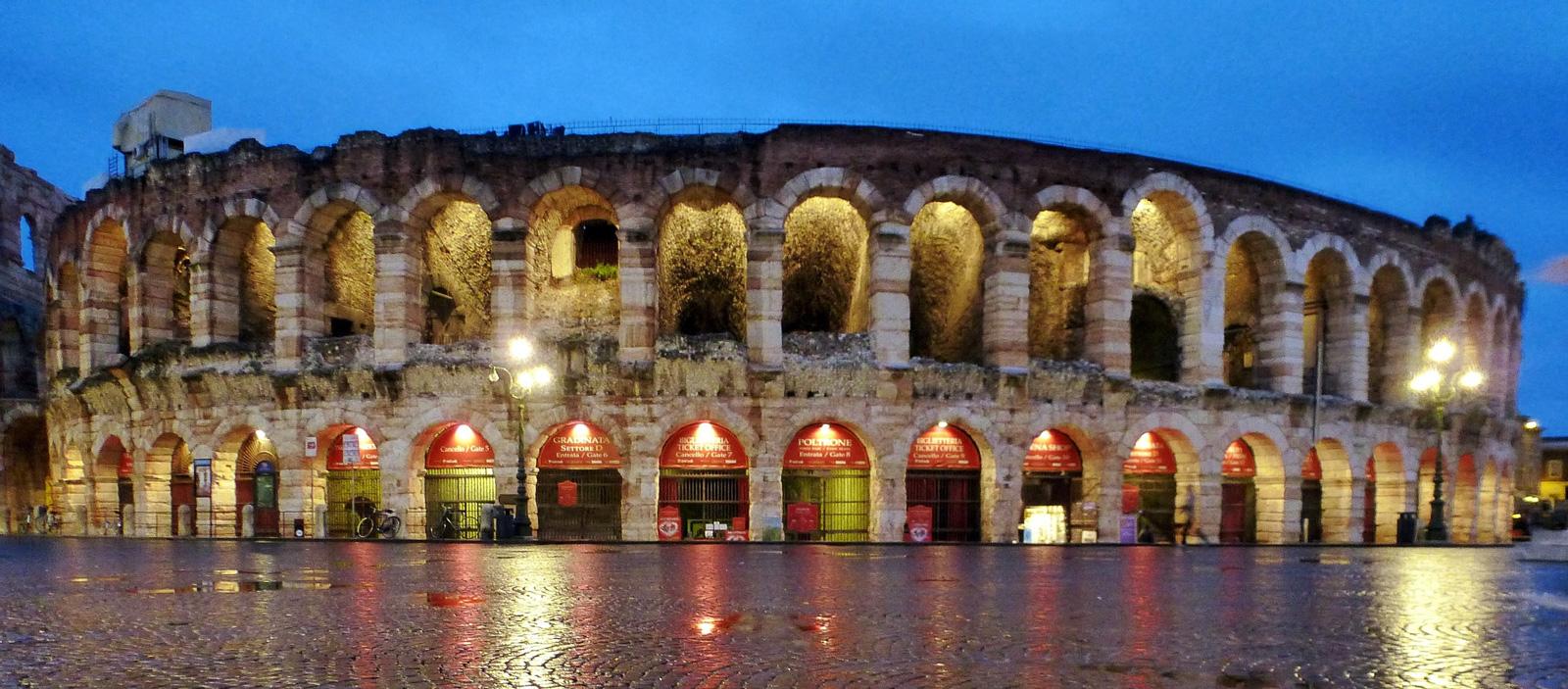The Roman Theatre of Verona

Today we talk about history!
In particular, we will introduce you to one of the most ancient monuments of the city of Verona: the Roman Theatre.
It was built in the 1st century BC on the right bank of the Adige, at the foot of the San Pietro hill, within the Roman walls of the city.
The Theatre consisted of two side parascenes, a dietroscenio wall and a frontescene, which was divided into three large niches: the main curve and the two square sides, where there were the three doors leading to the stage.
Several statues composed - on three floors - the frontescene, which served as background for the shows.
In front of the scene is still the proscenium, behind which there was the curtain.
Outside, on the other hand, the façade was marked by semi-columns, with different styles to distinguish each floor: semi-columns of Tuscan order for the ground floor, those of the Ionic order for the second and semi-pilasters for the last.
The incessable flow of time and natural events ruined, little by little, the Theatre.
But, in 1834, Andrea Monga - a rich Veronese merchant - started a revitalization process: he bought all the buildings in the area and led demolition and recovery works.
Works that continued, then, thanks to the City of Verona.
During the excavations, finds of all kinds were found, such as sculptures and decorations. To date, some parts of the historic monument have survived: the cavea, the steps, some arcades of loggias and the load-bearing walls of the building. In addition, two buildings have resisted the recovery excavations: the Convent of San Girolamo and the Church of Saints Sirius and Libera.
The first is in what - once - was the theatre's terrace; the second overlooks the eastern part of the staircase.
Within the Roman Theatre, the Archaeological Museum has been housed since 1924 and during the summer the two great events of the Veronese Theatrical Summer are hosted: the Shakesperian Festival and the Verona Jazz Festival.
Numerous international artists have taken the stage of the Theatre: from Rufus Wainwright to Patti Smith, from Francesco De Gregori to Ornella Vanoni.
Outdoor cinema, dance, jazz and contemporary music cheer spectators from all over the world in a unique atmosphere.
In fact, from the Ponte Pietro (the only survivor from the Roman era) you can see the Theatre and, climbing to the top of the Colle di San Pietro (walking for about 10 minutes), you will be able to see better the remains of the work and enjoy a beautiful view of the city.
And it is even more exciting to be there for the sunset, when the last rays of the sun illuminate the Theatre and the waters of the Adige flow next to it.



